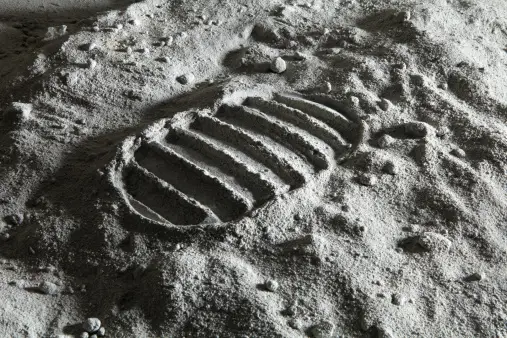Undestanding Earth's Loyal Companion
The Fascinating World of Earth's Loyal Companion: A Complete Understanding
Introduction
The Moon, Earth's loyal companion, has captivated humanity for centuries with its enigmatic presence and influence. Understanding this celestial body goes beyond mere admiration; it holds the key to unraveling mysteries that impact our planet in profound ways.
What is the Moon and its Significance?
The Moon is Earth's natural satellite, orbiting our planet at a precise distance that allows for the phenomenon of lunar phases and eclipses. Its gravitational pull affects Earth's tides, ecosystems, and even our sense of time.
Historical Overview of Moon Observation
From ancient civilizations to modern scientists, humans have gazed at the Moon in wonder and curiosity. The Moon's phases and movement have been meticulously recorded throughout history, guiding calendars, religious practices, and scientific discoveries.
Why is understanding the Moon important for Earth?
Studying the Moon provides critical insights into Earth's evolution, climate, and sustainability. By comprehending the Moon's formation, composition, and cycles, we gain a deeper grasp of our planet's interconnected relationship with its celestial companion.
The Moon's Formation and Composition
How did the Moon form?
The prevailing theory suggests that a collision between Earth and a Mars-sized planetesimal led to the creation of the Moon. This impact ejected debris that coalesced into the lunar body we see today.
What is the Moon made of?
The Moon's composition resembles that of Earth's mantle, with elements like oxygen, silicon, and iron dominating its structure. Notably, the lack of a substantial atmosphere results in extreme temperature variations between day and night.
How does the Moon's composition affect Earth?
The Moon's gravitational pull stabilizes Earth's axial tilt, preventing drastic climate changes. Additionally, lunar impacts have contributed to shaping Earth's geological features over billions of years.
Phases of the Moon and Lunar Cycles
What causes the phases of the Moon?
The interaction between the Sun, Earth, and Moon creates the varying illuminated portions of the lunar surface. From new moon to full moon and back, these phases occur predictably due to the Moon's orbit.
Understanding lunar eclipses
During a lunar eclipse, Earth blocks sunlight from reaching the Moon, casting a reddish hue over the lunar surface. These awe-inspiring events remind us of the intricate dance between celestial bodies in our solar system.
How do lunar cycles impact Earth's tides and ecosystems?
The Moon's gravitational force causes tides on Earth, influencing ocean currents and marine life cycles. Ecosystems near coastlines have evolved to adapt to the rhythmic rise and fall of tides, showcasing the intimate connection between the Moon and life on Earth.
Moon Exploration and Future Missions
Historical Moon missions
From the Apollo program to unmanned probes, humanity has endeavored to explore the lunar landscape. These missions have provided valuable data on lunar geology, gravity, and potential resources.
Current research and exploration on the Moon
Today, global space agencies and private companies are conducting missions to study the Moon's polar regions, lava tubes, and mineral deposits. Advancements in technology have enabled unprecedented discoveries about our cosmic neighbor.
Exciting prospects for future lunar missions
Future lunar missions aim to establish sustainable habitats, extract resources, and pave the way for human colonization. The Moon serves as a testing ground for technologies essential for future deep space exploration, including Mars missions.
Myths, Legends, and Cultural Significance of the Moon
Ancient beliefs and folklore surrounding the Moon
Civilizations worldwide have crafted myths and legends to explain the Moon's origin and influence. From lunar deities to werewolf tales, cultural narratives reflect humanity's deep connection to the celestial sphere.
Influence of the Moon on human culture and traditions
The Moon's phases have shaped rituals, celebrations, and art forms across diverse cultures. Festivals like the Mid-Autumn Festival in China and Mooncake Day in Vietnam honor the Moon's symbolism and bring communities together.
Modern interpretations and implications of lunar myths
In contemporary society, the Moon continues to inspire art, literature, music, and scientific endeavors. Its enduring presence in popular culture reflects our enduring fascination with celestial mysteries and the wonders of the cosmos.
Conclusion
In conclusion, the Moon stands as Earth's loyal companion, casting its light on our planet and guiding us through time. By delving into the intricacies of the Moon's formation, phases, and cultural significance, we deepen our understanding of the interconnected relationship between celestial bodies and life on Earth.
Key takeaways:
* The Moon's gravitational pull influences Earth's tides and ecosystems.
* Ongoing research and exploration hold promise for future lunar missions.
* Cultural beliefs and myths surrounding the Moon reflect our enduring fascination with the cosmos.
FAQs
Q: How does the Moon affect Earth's tides?
> A: The Moon's gravitational pull causes tides on Earth, influencing ocean currents.
Q: Can we live on the Moon?
> A: While there are challenges to living on the Moon, there are ongoing research and experiments exploring the possibility of establishing lunar habitats.
Q: Why is the Moon always visible at night?
> A: The Moon reflects light from the Sun, making it visible in the night sky. Its phases change as it orbits Earth, leading to different amounts of reflected light.






Post a Comment